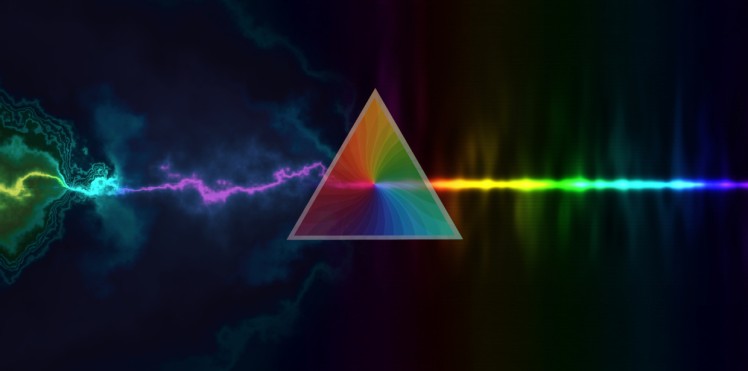Listen to this Article
- What is SWIR?
Short-wave infrared imaging (SWIR) is an advanced technique that captures images from wavelengths that are invisible to the human eye. The range of wavelengths used in SWIR cameras is generally between 0.9 – 1.7μm, but it can also extend from 0.7 – 2.5μm. SWIR cameras are portable imaging systems that can produce detailed images with precise color measurements and advanced chemical imaging.
SWIR light behaves similarly to visible light, reflecting off objects, which creates shadows and contrasts in images. The level of detail and resolution in SWIR camera images is comparable to that of visible images. This makes it easier to differentiate objects in a given area, even if they are similar in color. - Why use SWIR imaging?
SWIR imaging enables many applications that are either challenging or impossible to perform using visible light. When capturing images in SWIR, materials like silicon and water vapor, as well as fog, become transparent, which makes for clearer images. Also, colors that may appear similar in visible light can be easily differentiated using SWIR.
- Ability to see through glass and obscured weather conditions.
- Can be used to complement thermal cameras.
- High-resolution imaging
- High sensitivity to invisible light and any changes
- No illumination is needed
- What is the range of SWIR detection?
Shortwave infrared (SWIR) light falls within the wavelength range of 0.9 to 1.7 μm, although it can also be categorized as 0.7 to 2.5 μm. SWIR imaging is a type of non-visible imaging that utilizes this specific range of the light spectrum. SWIR cameras typically work in the spectral range of 900 to 1700 nm. - How does SWIR imaging work?
Wavelengths in the SWIR band interact with objects in a similar way to visible light. Photons at this wavelength are either reflected or absorbed by objects, allowing for high-resolution imaging with strong contrast.
SWIR imaging is particularly useful for applications that require clear and reliable visualization through obstacles such as fog, smoke, and glass. SWIR cameras can produce high-quality images in low-light conditions, making them suitable for both daylight and nighttime imaging. Additionally, SWIR imaging can distinguish between colors that may appear almost identical to the human eye in the visible spectrum - What are the advantages of using SWIR imaging over visible sensors?
SWIR cameras can use conventional, cost-effective visible camera lenses to identify objects that thermal imagers cannot detect. Additionally, they can be mounted inside a protective enclosure for added flexibility. - What are common applications for SWIR imaging?
SWIR imaging is a valuable tool in various industries for many reasons. For instance, silicon wafer inspection is possible using SWIR imaging since silicon is transparent in the SWIR range. SWIR wavelengths render silicon wafers as transparent due to the high optical transmissivity of wavelengths of light longer than silicon’s 1050 nm band gap. This makes silicon transparent during the image capture process greatly improving the SWIR-driven silicon inspection process outcome.
Additionally, the pharmaceutical industry can benefit from SWIR imaging as it enables the distinction between different compounds that may appear similar under visible light. For biomedical imaging, SWIR cameras can provide deep tissue imaging for in vivo applications (observing the overall effects of a test or experiment on a living subject). Moreover, SWIR can be used for various industries including agriculture, industrial inspection, medical imaging, research, and military applications. - What is the difference between multispectral imaging and hyperspectral imaging?
Multispectral and hyperspectral images are two types of remote sensing technologies used to capture and analyze information. While both technologies utilize the electromagnetic spectrum to identify objects and features, the key difference lies in the number of bands they capture.
Multispectral images typically capture a few broad bands of light, such as red, green, and blue, while hyperspectral images capture hundreds of narrow, contiguous bands within the same portion of the electromagnetic spectrum. This means that hyperspectral images can provide a more detailed and comprehensive analysis, as they can detect subtle differences in the reflectance of objects and materials. - What can SWIR see through?
SWIR imaging can 'see through' fog, smoke, and materials such as glass. They produce high-quality images in low-light conditions but can also be used for daylight imaging. - How can SWIR imaging improve machine vision inspection?
Shortwave infrared (SWIR) imaging can improve machine vision inspection by providing advanced sensitivity, better image quality, and non-destructive testing capabilities. SWIR cameras can detect objects that are impossible to detect by the visible spectrum, and their shorter wavelengths enable higher resolution and stronger contrast. For instance, SWIR light is highly absorbed by water, meaning frozen peas with high water content would appear very dark in the image. - What is an InGaAs sensor?
InGaAs (indium gallium arsenide) area image sensors are two-dimensional sensors that feature a hybrid structure consisting of a CMOS readout circuit (ROIC) and back-illuminated InGaAs photodiodes for near-infrared (NIR) and short-wavelength infrared (SWIR) regions.
Computar's ViSWIR Hyper APO Lens Series
The ViSWIR lens series achieves fully corrected focus shift in visible and SWIR range (400nm-1,700nm). By using ultra-low dispersion glass and low partial dispersion glass paired with superior design technology the focus shift is minimized within a few microns mm at a super wide range of wavelengths. With this, spectral imaging is achievable with a single sensor camera by simply syncing the lighting.
By adopting an APO floating design*, the focus shift is reduced at any wavelength and any working distance. This function makes the series ideal for multiple applications, including machine vision, UAV, and remote sensing.
Source: computar.com
ALSO READ: GETTING OGI LEAK DETECTION RIGHT WITH IMPROVED TECH AND TOOLS
Back to All Robotics and Autonomous Systems Articles, Resources and News
































